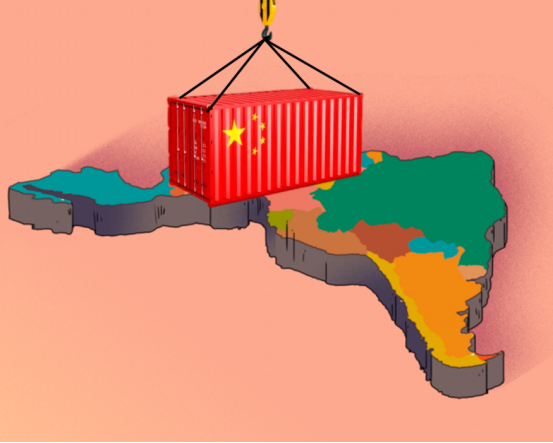New trade agreements between China and Latam
2024-02-05 14:12

2023 has seen the strengthening of relations between China and Latin America. Two new trade agreements between China and two Latam countries (Ecuador and Nicaragua) have come to fruition, while another is in the negotiation phase (Honduras).
These agreements have as main objectives:
- Break down trade barriers between both regions
- Promote joint development
- Increase international use of the Chinese currency (yuan)
China is currently the second most important trading partner for the Latin American region, only behind the United States, and the volume of exchange between both participants is expected to double in the next decade, according to estimates by the German foreign trade agency. and marketing , Germany Trade and Invest (GTI).
What are the new trade agreements between China and Latam promoted during 2023?
1. FTA China - Ecuador
After a year of negotiations, the Free Trade Agreement between China and Ecuador was signed on May 11. This is the first trade agreement that the Ecuadorian government signs with an Asian country, it contemplates a total of 17 disciplines and contains a chapter on electronic commerce.
According to official figures, the trade exchange of goods between Ecuador and China reached a total of 12 billion dollars in 2022.
2.FTA China - Nicaragua
On July 24, 2023, the conclusion of negotiations for a Free Trade Agreement between the Nicaraguan and Chinese governments was announced. The agreement will allow tariff-free exports between both nations, will be signed in August and will come into force in 2024.
3.FTA China - Honduras
On July 4, China and Honduras began negotiations for a historic Free Trade Agreement. At the end of March of this year, the Central American country broke relations with Taiwan and recognized “ one China ” , thus initiating ties with the government in Beijing.
But not only the signings and negotiations of free trade agreements have strengthened the presence of the Asian giant in the region. Other important trade movements were formalized in the first half of 2023, with the aim of promoting the use of the Chinese currency (yuan) in Latin America.
Brazil and China strengthen their trade relationship
Brazil and China signed 15 bilateral agreements worth an estimated $10 billion during President Luiz Inacio Lula da Silva's visit to Beijing in April.
The agreements cover, among other things, the joint development of satellites, the promotion of the digital economy and the facilitation of trade. Currently, the YUAN is the second currency in Brazil's international reserves.
Argentina activates payment for Chinese purchases in yuan
In April, the South American country announced the activation of the swap with China, which allowed in May the payment with yuan of more than 1,40 million dollars corresponding to imports from China.
Argentina hopes yuan transactions will help it maintain US dollar reserves after a historic drought reduced exports by around $15 billion.
The implications of trade between China and Latam
In 2022, trade between China and Latin America grew by about 11% to reach a value of almost $500 billion. According to figures from the Center for Global Development Policy at Boston University, last year, Latin American countries exported around $184 billion in goods to China, while imports reached a value of $265 billion.
With tensions with the United States rising, Beijing seeks to establish better and stronger economic relations in Latin America. For the continent's southern nations, this represents a source of foreign direct investment, as well as energy and infrastructure loans, but growing Chinese influence has raised concerns for the United States.
According to the Council on Foreign Relations, the Chinese government has strengthened its military ties with several countries, particularly Venezuela, and the country has already surpassed the United States as South America's largest trading partner.
Despite US reservations, in 2021 alone, China implemented around 200 infrastructure projects in Latin America, with an investment of $98 billion. Chinese influence in the region has also strengthened cooperation in the high-tech sector, digitalization and the green economy, and analysts expect trade agreements between East Asia and Latin America to grow in number in the short and medium term.
Written by YEN
